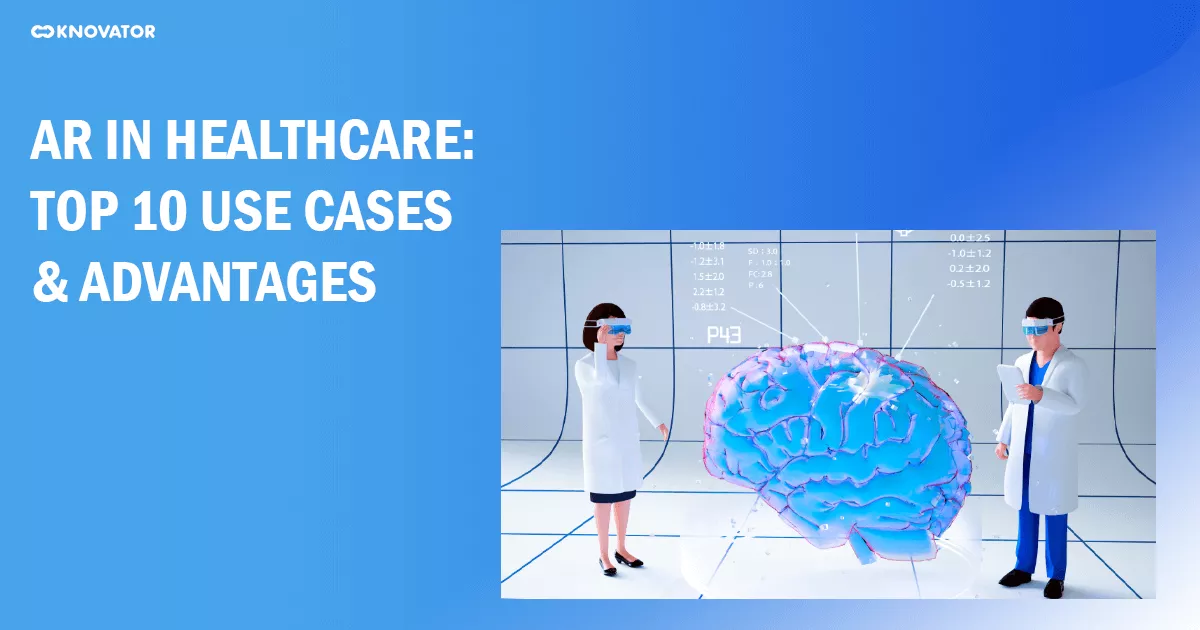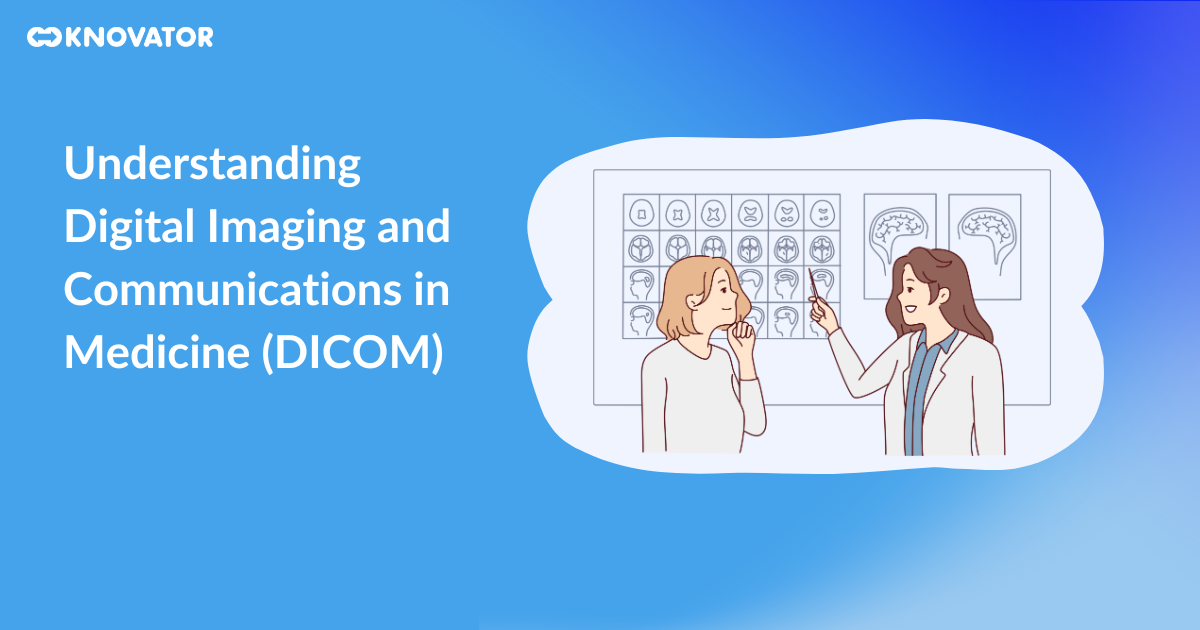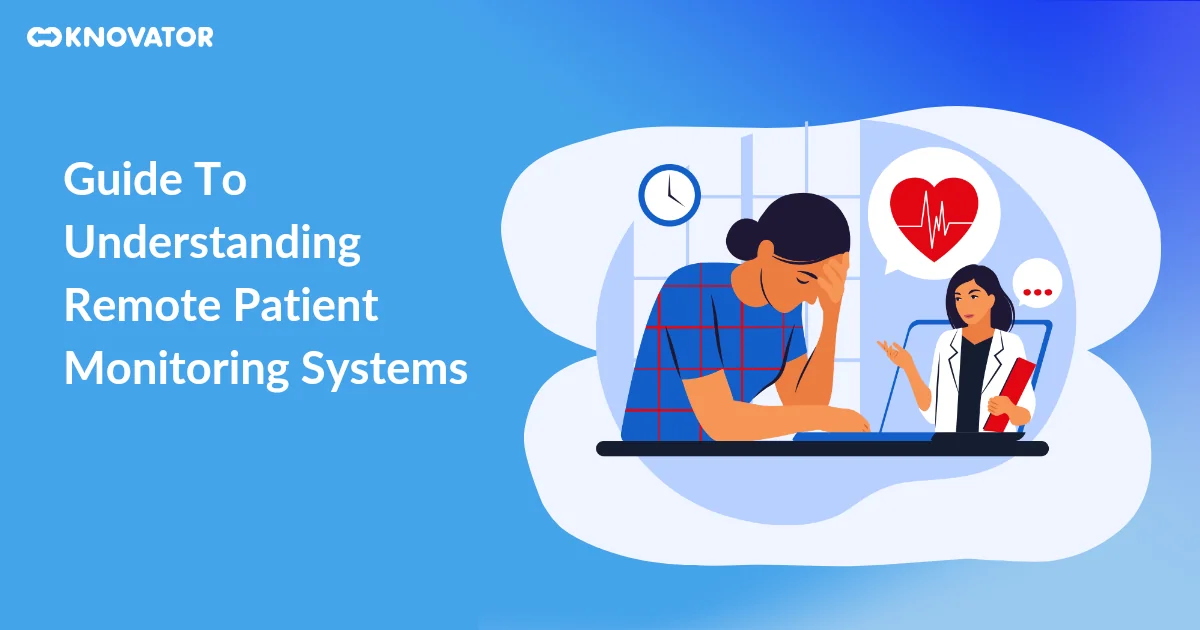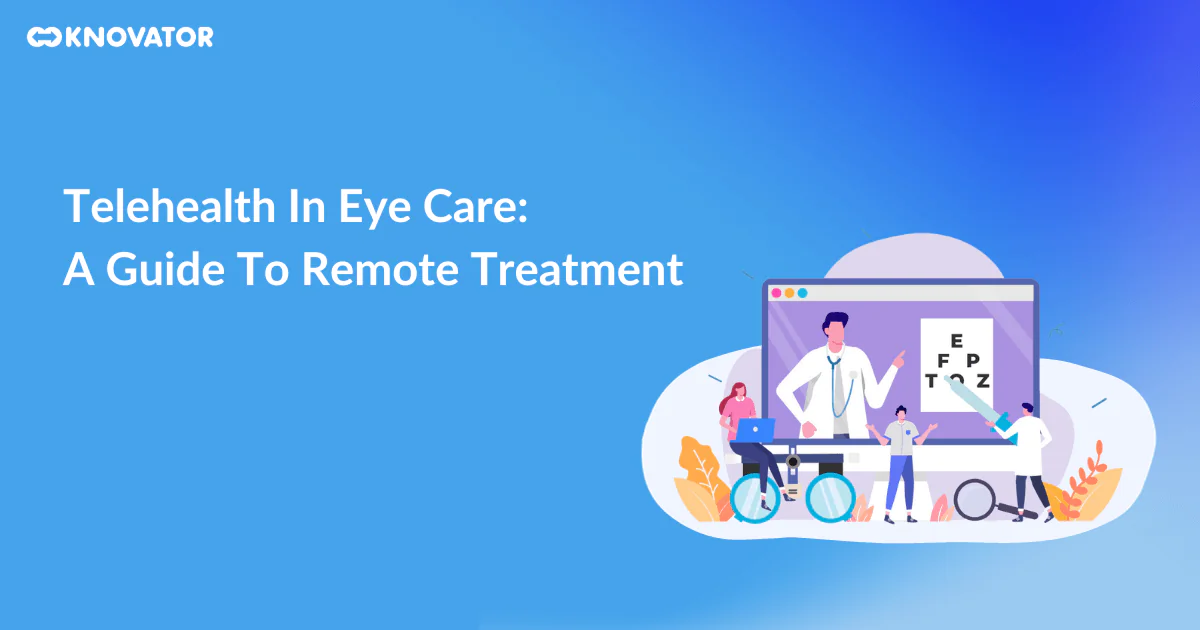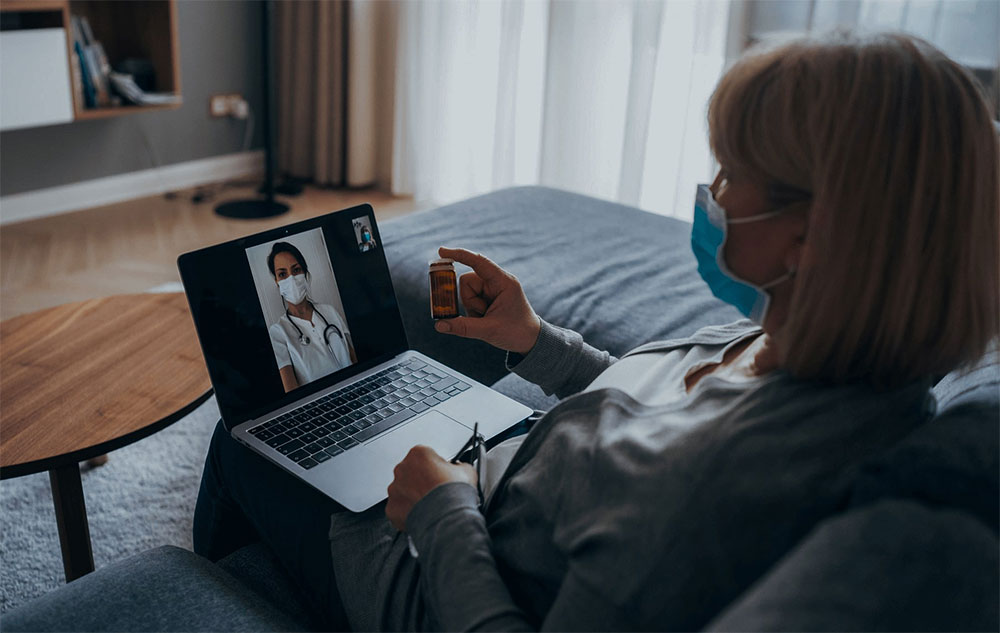Technology is changing many industries, including healthcare. 80% of healthcare providers want to invest in technology and digital solutions. One technology, Augmented Reality (AR), is making big changes in how healthcare works. It finds its use in training doctors, helping with complex surgeries, and teaching patients about their health.
In this blog post, we’ll explore the top 10 ways AR finds its place in healthcare and the benefits it brings. We’ll show you how AR in healthcare is improving lives.
So, if you’re a healthcare worker, a tech fan, or just interested in how technology improves health, this post is for you. Get ready to see how AR in healthcare is shaping the future.
What Is Augmented Reality?
Augmented Reality (AR) is a technology that overlays digital content and information onto the physical world, enriching our perception of reality.
It uses a smartphone or AR glasses to superimpose 3D models, text, images, or interactive elements in real time. This added layer of information enhances the user’s experience by providing contextual data, improving understanding, or adding a gamification aspect to everyday life.
AR is used widely across various industries, from gaming and education to healthcare and retail, offering new ways to interact with our surroundings.
How Does Augmented Reality Work?
 Augmented Reality (AR) uses technology to overlay digital content onto the real world.
Augmented Reality (AR) uses technology to overlay digital content onto the real world.
Here’s how:
- A device (such as a smartphone, tablet, or AR glasses) with an AR application uses sensors and cameras to gather information about the user’s environment, such as depth, orientation, and location data.
- The application uses this information to understand the physical context to place the digital content. This is possible by algorithms that track objects or surfaces in the environment.
- The AR application generates digital content, which can be simple text or images to complex 3D models and animations.
- The AR device places this digital content onto the user’s view of the real world, aligning it with physical objects or locations. This produces a view that combines reality with digital additions, creating an augmented reality.
This process happens in real-time, allowing users to interact with the real and virtual elements seamlessly. With advancements in AR technology, digital content’s integration with the physical world is getting accurate.
How Has AR Changed The Healthcare Industry?
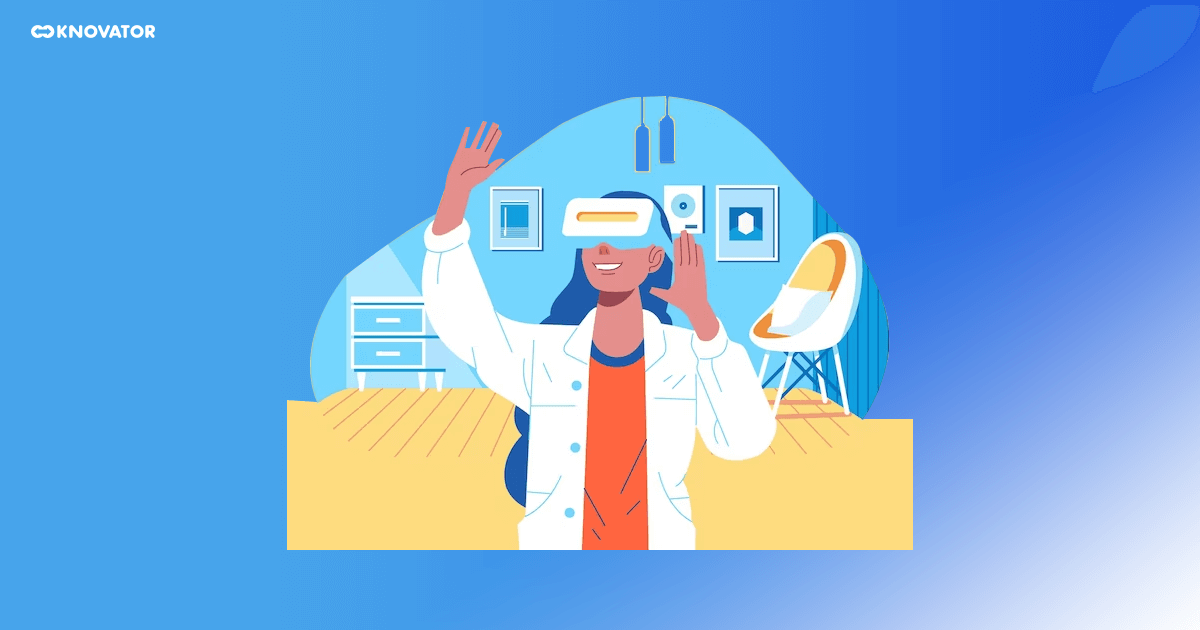 So, what is AR in healthcare? Let’s find out about it.
So, what is AR in healthcare? Let’s find out about it.
Augmented Reality has changed healthcare in many ways. It helps doctors see medical conditions in 3D, making surgeries safer and more precise. AR also finds its use in teaching medical students using virtual patients or surgeries. In physical therapy, AR games make sessions more enjoyable, speeding up recovery. AR helps patients understand their health conditions better and follow their treatments. It also improves care for patients who live far away through telemedicine.
With this, you can understand that AR has made a big difference in healthcare, helping to make treatments better and more effective.
In this post, we’ll see more about the use cases of AR in healthcare and how it is a game changer.
What Are The Benefits Of Using Augmented Reality In Healthcare?
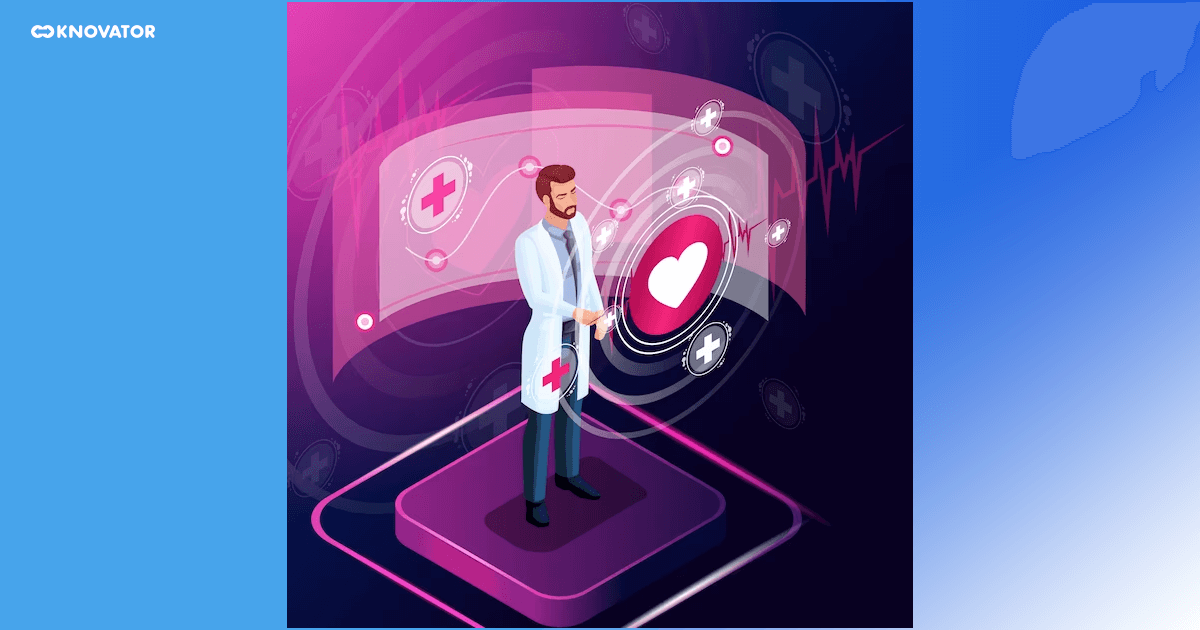 Let’s take a look at the advantages of using AR in healthcare,
Let’s take a look at the advantages of using AR in healthcare,
- Improved Training of Medical Students
The biggest advantage of AR is that it enables a more detailed understanding of the human body. It further facilitates hands-on training, allowing students to practice surgical procedures in a safe and controlled environment. This bridges the gap between theoretical knowledge and practical skills. - Increased Precision in Surgery
AR provides real-time, 3D guidance during surgery, aiding surgeons in precise navigation and potentially reducing surgical errors. Notably, the improved surgical precision due to AR can lead to less invasive procedures, which help patients recover faster and reduce complications. - Effective Diagnosis and Treatment
Augmented Reality helps doctors a lot in diagnosing and treating patients. It can make complex medical images easier to understand, like those from CT scans or MRIs. This means doctors can identify diseases more accurately. AR also helps doctors plan treatments better. For example, it can show how a drug might affect a patient’s body, letting doctors change the drug or its dose if needed. - Enhanced Patient Satisfaction
Augmented Reality in healthcare makes it easier for doctors and patients to communicate by turning complex medical information into images that are easier to understand. This helps patients feel more comfortable and satisfied with the treatment.
Practical Use Cases of AR in Healthcare
You now have an idea of AR, how it works, and the benefits it offers healthcare. Let’s now delve deeper to understand the use cases of Augmented Reality and how they improve healthcare.
- Communication between Doctor-Patient
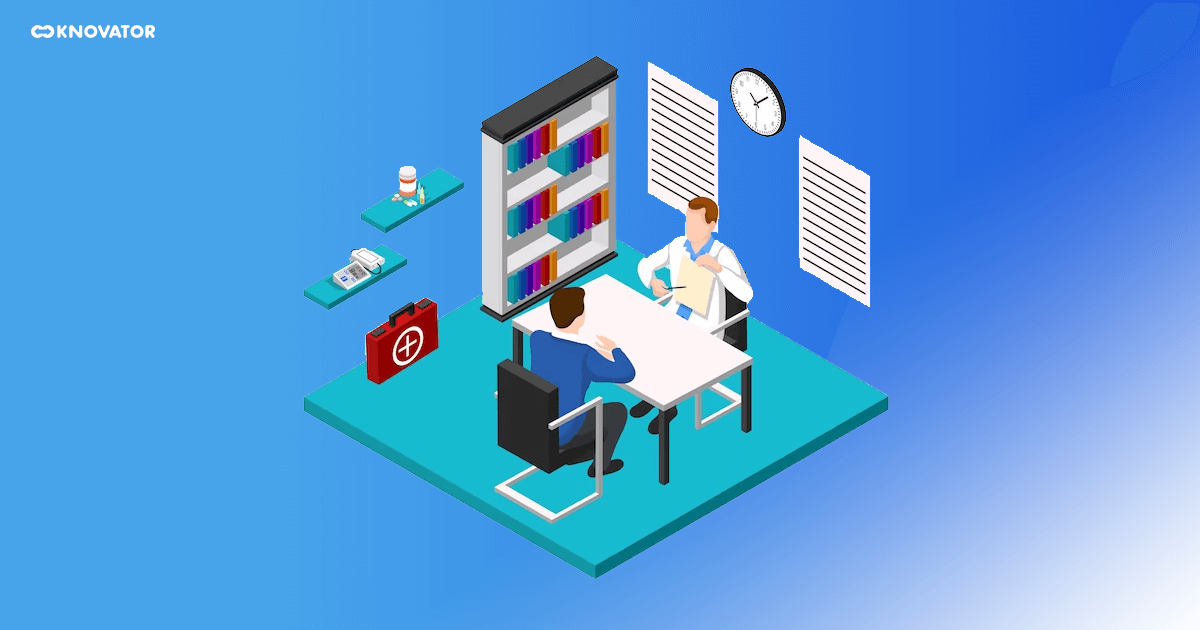 It is possible to enhance doctor-patient communication with AR.
It is possible to enhance doctor-patient communication with AR.
AR makes explaining medical conditions simpler. Doctors can use 3D models of body parts or organs to explain what’s wrong and how they plan to fix it. This visual approach is easier to understand than just words, reducing the chances of misunderstanding.
AR also allows doctors to show patients what to expect after treatment or surgery. This way, patients can see potential outcomes before making decisions. This is especially useful in fields like cosmetic surgery.
Managing medications becomes easier with AR. You have apps to show how a particular medicine works, what it does, and how to take it properly. This can make patients more likely to stick with their medication plan.
- Medical Education for Students
 In traditional medical education, students often learn about the human body and complex medical procedures through textbooks, lectures, and sometimes hands-on practice. Augmented Reality (AR) can make this learning process more interactive and easier to understand.
In traditional medical education, students often learn about the human body and complex medical procedures through textbooks, lectures, and sometimes hands-on practice. Augmented Reality (AR) can make this learning process more interactive and easier to understand.
For example, AR can project a 3D representation of the human body, showing students how all the organs fit together and work. This hands-on, visual learning can make complex ideas easier to grasp.
In addition to learning about anatomy, AR in the medical field finds its use for surgical training. Instead of practicing on a real person, students can use AR to perform surgery on a virtual patient. This allows them to practice and make mistakes without any real-world consequences. They can also replay certain surgery steps to understand the process better.
- Assisted first aid
 Augmented reality in the medical field can help guide people when they need to give first aid. Imagine you’re in an emergency and don’t know what to do. With AR, you can see step-by-step instructions on how to help right in front of your eyes.
Augmented reality in the medical field can help guide people when they need to give first aid. Imagine you’re in an emergency and don’t know what to do. With AR, you can see step-by-step instructions on how to help right in front of your eyes.
A good example is when someone needs CPR. AR could show you exactly how to do it. It could tell you if you’re pushing hard enough and fast enough on a person’s chest. It’s a helpful tool for saving a life.
AR can be a great training tool, too. It can create realistic emergencies for professionals to practice. These could be anything from a minor injury to a heart attack. Practicing in this way can help people feel ready to handle real emergencies.
- Pain management
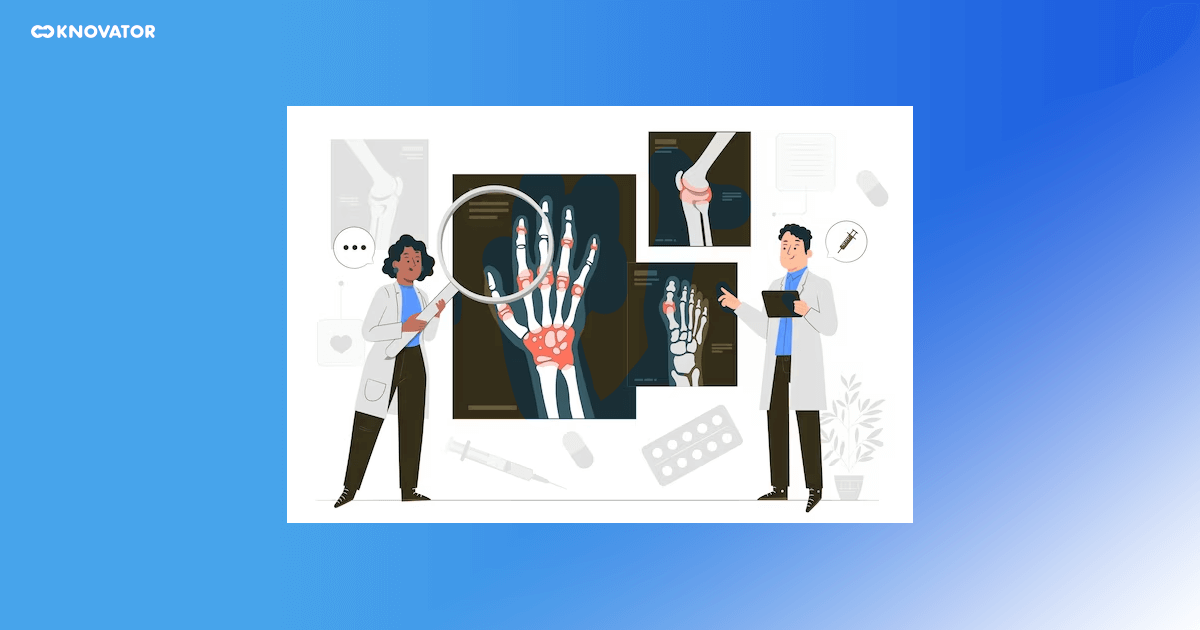 Patients suffering from chronic pain can use AR technology to distract themselves, reducing their perceived pain levels. For instance, patients can wear AR goggles during wound care or physiotherapy to immerse themselves in a calming, virtual environment, shifting their focus away from the pain. Additionally, AR can assist in teaching self-management strategies by visually demonstrating techniques like guided breathing exercises. Thus, AR provides a non-pharmacological, engaging tool for managing pain, and improving the overall patient experience.
Patients suffering from chronic pain can use AR technology to distract themselves, reducing their perceived pain levels. For instance, patients can wear AR goggles during wound care or physiotherapy to immerse themselves in a calming, virtual environment, shifting their focus away from the pain. Additionally, AR can assist in teaching self-management strategies by visually demonstrating techniques like guided breathing exercises. Thus, AR provides a non-pharmacological, engaging tool for managing pain, and improving the overall patient experience.
- Virtual Collaboration Between Physicians
 Augmented Reality (AR) in healthcare fosters virtual collaboration among physicians, regardless of their geographical location. For instance, a specialist can guide a less experienced doctor through a complex real-time procedure. This enables knowledge sharing and learning without travel constraints. AR overlays instructions onto the real-world view of the patient or situation, providing a better understanding of the procedure. Thus, AR significantly contributes to improved medical outcomes and patient care.
Augmented Reality (AR) in healthcare fosters virtual collaboration among physicians, regardless of their geographical location. For instance, a specialist can guide a less experienced doctor through a complex real-time procedure. This enables knowledge sharing and learning without travel constraints. AR overlays instructions onto the real-world view of the patient or situation, providing a better understanding of the procedure. Thus, AR significantly contributes to improved medical outcomes and patient care.
- Breastfeeding Guidance for New Mothers
 Augmented Reality (AR) has practical applications in healthcare, and one such use case is breastfeeding guidance for new mothers. AR can provide real-time visual assistance and support, enhancing the breastfeeding experience for both the mother and baby.
Augmented Reality (AR) has practical applications in healthcare, and one such use case is breastfeeding guidance for new mothers. AR can provide real-time visual assistance and support, enhancing the breastfeeding experience for both the mother and baby.
Using AR, a new mother can wear special glasses or use a mobile device to see virtual overlays and instructions during breastfeeding. These overlays can guide correct positioning, ensuring the baby receives optimal nutrition and reducing discomfort for the mother.
Also, healthcare professionals can remotely monitor breastfeeding sessions, offering real-time feedback and guidance to new mothers, even from a distance.
- Assisted surgery
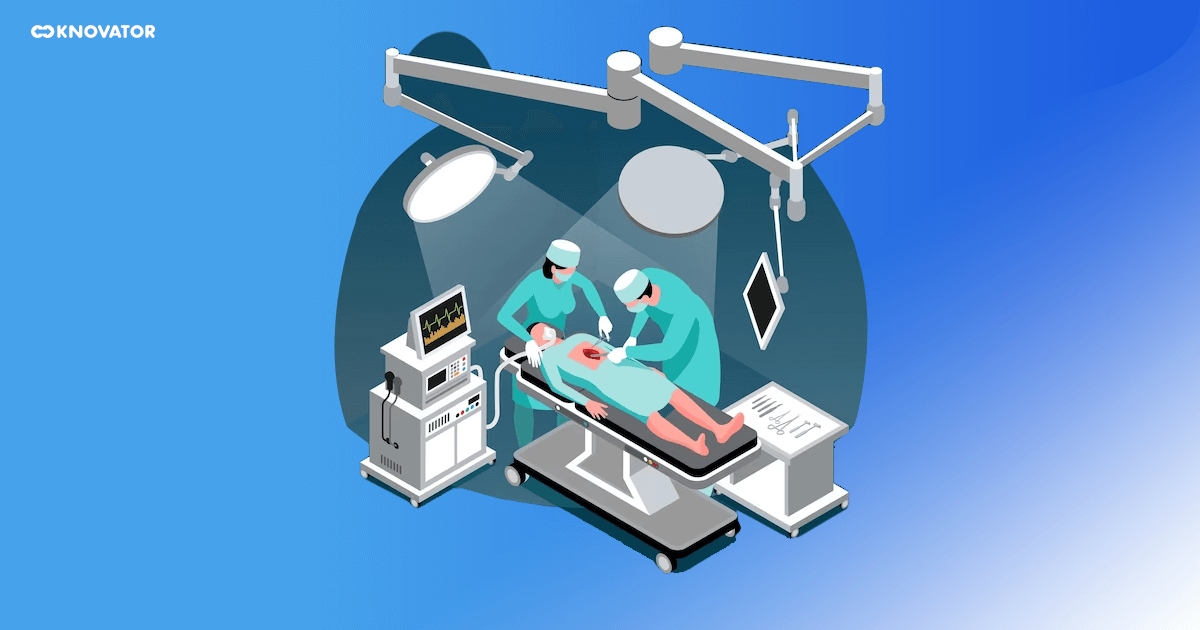 Medical Augmented Reality can help create 3D models of a patient’s anatomy, which surgeons can then use to plan their surgeries. This can help identify potential risks and ensure the surgery is performed as accurately as possible.
Medical Augmented Reality can help create 3D models of a patient’s anatomy, which surgeons can then use to plan their surgeries. This can help identify potential risks and ensure the surgery is performed as accurately as possible.
Then, AR provides surgeons with real-time guidance during surgery. This is possible by overlaying 3D images of the patient’s anatomy, surgical instruments, or other relevant information onto the surgeon’s field of view. This can help to improve the surgeon’s accuracy and reduce the risk of complications.
It is also possible to do remote surgery, which allows surgeons to operate on patients located in different parts of the world. This is possible by using AR headsets to project the surgeon’s view of the operating field onto the headset of a remote surgeon. This allows the remote surgeon to see what the local surgeon is seeing and to provide guidance and assistance during the surgery.
Description of Symptoms by Patients
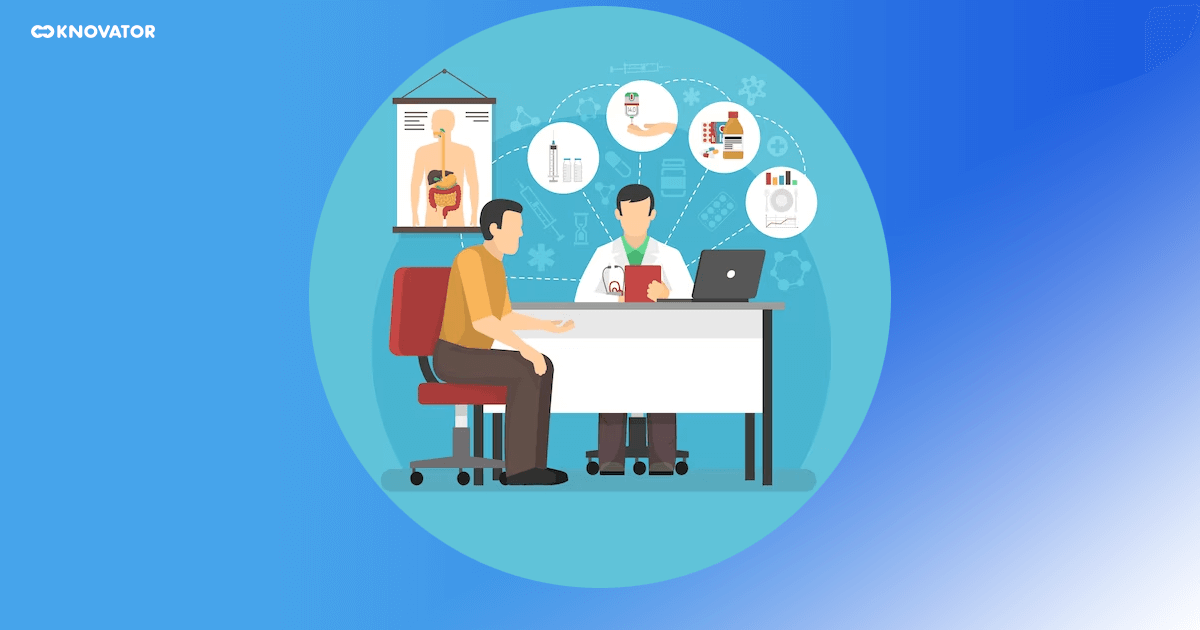 AR apps can overlay 3D models of the human body onto the patient’s body, allowing them to point to the areas where they feel pain or discomfort. This can help doctors to quickly and accurately diagnose the patient’s condition.
AR apps can overlay 3D models of the human body onto the patient’s body, allowing them to point to the areas where they feel pain or discomfort. This can help doctors to quickly and accurately diagnose the patient’s condition.
For example, a patient experiencing chest pain can use an AR app to point to the exact location of the pain. This information can help the doctor to rule out certain conditions, such as a heart attack, and to focus on other possible causes of the pain.
AR can also help patients understand their condition better. For example, a patient diagnosed with cancer can use an AR app to see a 3D model of their tumor. This can help the patient understand the tumor’s size and location, as well as the treatment options available.
Location of patient’s veins
 AR apps can overlay a 3D map of the patient’s veins onto their skin, allowing medical professionals to see the veins in real-time. This can help to reduce the number of times the needle needs to be inserted, which can be painful and uncomfortable.
AR apps can overlay a 3D map of the patient’s veins onto their skin, allowing medical professionals to see the veins in real-time. This can help to reduce the number of times the needle needs to be inserted, which can be painful and uncomfortable.
For example, a nurse can use an AR app to locate a patient’s veins before giving them an injection. This helps ensure that the healthcare professional gives the injection in the correct location and that the patient experiences minimal pain.
AR can also help medical professionals locate veins for other procedures, such as blood draws, and IV starts. This can help to improve the efficiency of these procedures and to reduce the risk of complications.
Drug Information from Pharma Companies
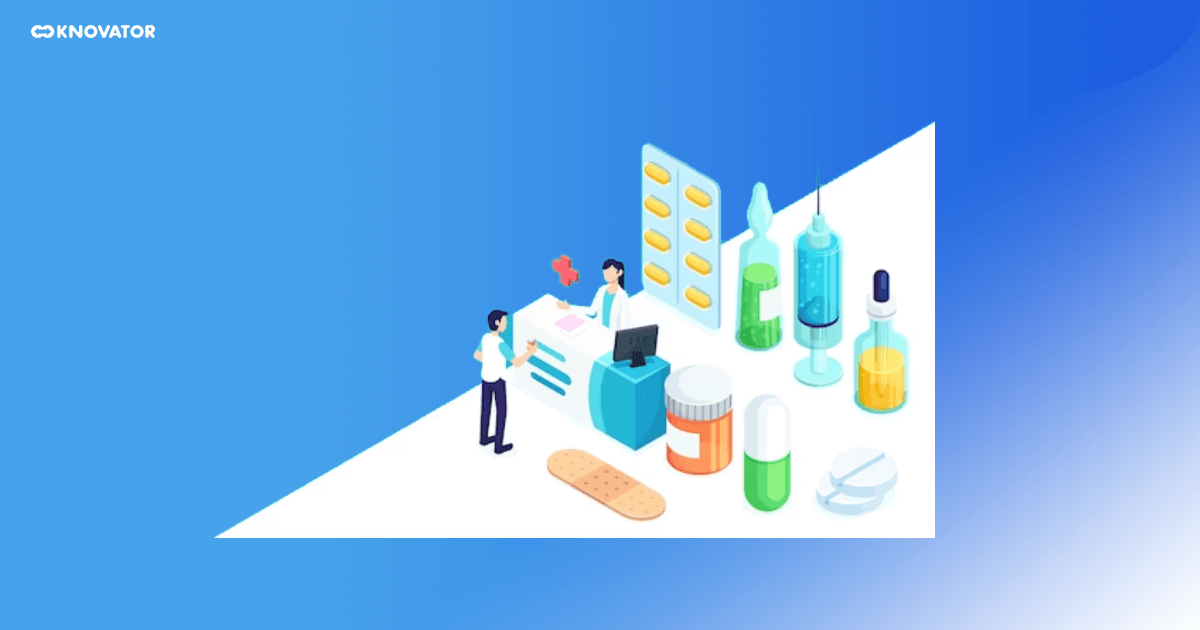 By making drug information more interactive and accessible, AR can help to improve patient safety and outcomes.
By making drug information more interactive and accessible, AR can help to improve patient safety and outcomes.
Here are some examples of how using AR in medicine can provide drug information:
Patient education: AR can be used to create interactive 3D models of drugs that can help educate patients about their medications. This can help patients understand how their medications work, what side effects to watch for, and how to take them properly.
Real-time information: AR can provide real-time information about drug interactions and side effects. This can help doctors and nurses make more informed patient care decisions.
What’s The Difference Between Augmented Reality & Virtual Reality?
Augmented reality (AR) and virtual reality (VR) are two different technologies used to create immersive experiences. However, there are some key differences between the two.
AR places a layer of computer-generated images onto a user’s view of the real world. This is possible using a smartphone, tablet, or special glasses.
Virtual reality creates an entirely immersive experience by blocking out the user’s view of the real world and replacing it with a computer-generated environment. This is done using a headset that covers the user’s eyes.
Augmented Reality in medicine is often used for training and education, while VR is often used for simulation and rehabilitation.
Future Of AR In Healthcare
 Using Augmented Reality for healthcare is quite interesting, and the future looks bright. In the years to come, remote surgery will not be surprising as AR will enable surgeons to operate on patients located in different parts of the world. This will enable patients to receive the best possible care, regardless of their location.
Using Augmented Reality for healthcare is quite interesting, and the future looks bright. In the years to come, remote surgery will not be surprising as AR will enable surgeons to operate on patients located in different parts of the world. This will enable patients to receive the best possible care, regardless of their location.
More people will have access to AR in healthcare, and the number will increase each year. It will help save patients’ lives and increase the efficiency of healthcare workers and doctors.
Let AR Change The World Of Healthcare For The Better
As you just read above, AR is helping healthcare in many areas, like training doctors, helping with surgeries, caring for patients, and even helping with mental health.
AR helps doctors see complex information in a simple way and helps them practice different situations without real risk. It also helps doctors during actual surgeries, making things safer for patients.
Using AR, doctors can understand patient issues better and make a personal plan for each patient. It makes surgeries more accurate and can help patients feel less scared about what’s happening.
Even though Augmented Reality for healthcare works well, it’s still new and can be expensive. Also, we need to ensure patient information stays safe, and it has to work well with our existing systems. But, as we keep improving it, we’ll likely see AR healthcare applications. This means better care for patients all over the world.
The bottom line is that anything for the betterment of humanity is welcome especially if it is the connection of augmented reality and medicine.

